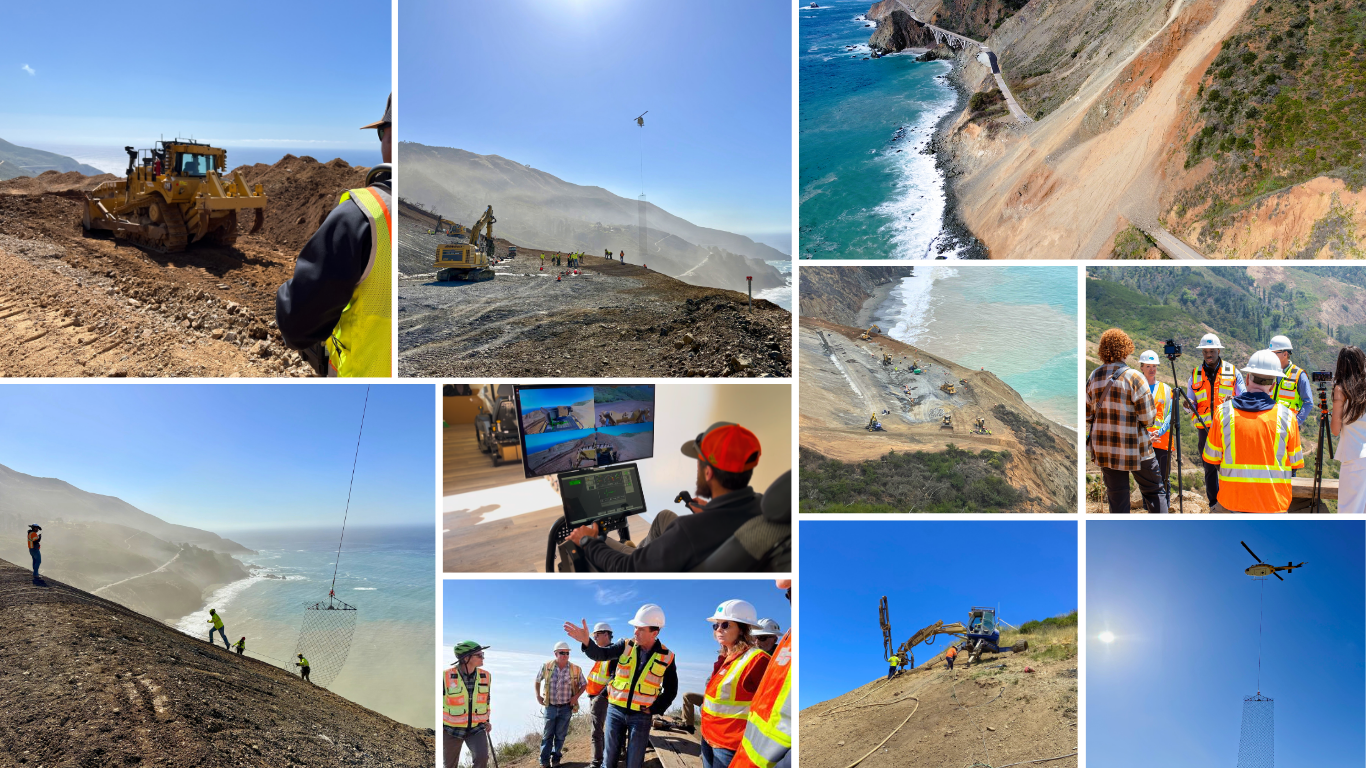Regent's Slide Removal Emergency Project
Highway 1 - Big Sur
.png?h=500&w=500&hash=BE3ACC829286D240F15E15D3ECAED3E7)
Project Summary
Repairs at Regent's Slide, which closed Highway 1 in Monterey County on February 9, 2024, continues to advance with slope stabilization efforts contributing to sustained excavation activity.
The slide originated approximately 450 feet above the roadway and resulted in the closure of a 6.8-mile segment of Highway 1.
Highway 1 at Regent's Slide is estimated to reopen to through traffic by the end of March 2026. The estimated date timeline reflects the current progress on repairs and may change due to additional slide activity or adverse weather conditions, as safety remains the top priority.
Key factors influencing the timeline include:
- Worker safety
- Weather conditions
- Potential for additional slide activity
Project Efforts and Outreach

Big Sur Coast Remains Accessible and Open
More than 100 miles of Highway 1 between Cambria and Carmel remain open, except for the 6.8-mile segment (one mile south of the Esalen Institute to two miles north of Lucia).
- From Northern California: Travelers can still access historic bridges, waterfalls, restaurants, and lodging amenities along the Big Sur coast.
- From Southern California: Travelers can reach the endearing communities of Lucia, Gorda, Ragged Point, San Simeon, and Cambria via Highway 1.
Weekly Highway Highlights
Check out Caltrans' weekly update on the Regent's Slide construction activity along the Big Sur coast. Each week, view the progress as crews steadily work to restore safe access along this vital stretch of Highway 1.
Regent's Slide Update: Summer 2025
Stay connected: Follow us on X, Facebook, and Instagram. For real-time travel updates, visit Caltrans QuickMap.
Contact District 5 Public Affairs Office
Phone: (805) 549-3318
Email: info-d5@dot.ca.gov
Frequently Asked Questions
| What is the geologic setting where the Regent's Slide occurred? | The California Geologic Survey Special Report 185: Landslide on Big Sur Coast identifies the stretch between Cow Cliffs and Rain Rocks as having the highest density of landslides on the coast. This area is extremely prone to slope failures due to:
|
| What is the "top down" approach, and why was it chosen? | The top-down method involves excavating from above the slide, removing displaced material until a stable, permanent slope is established. This approach was chosen because:
|
| What equipment is being used? | Caltrans and its contractors are using a wide range of specialized tools, including:
|
| Are there any regulatory or procedural delays? | No, Caltrans is working closely with partner resource agencies, with regular updates and coordination. Future environmental mitigation measures will be determined as the project progresses. |
| How much has the project cost so far? |
|
| Will explosives be used? | Yes, we are using carefully controlled explosives to strategically break apart selected larger rocks that cannot be removed by other means. This proven method improves both efficiency and safety, and will continue to be utilized as crews work towards the lower key rock outcropping. |
| Are outside experts being consulted? | Yes, Caltrans is working with both internal and external geotechnical experts. Their feedback has validated and strengthened the current approach. |
| Will the highway be rebuilt on top of the slide material? | No. The roadway will be reconstructed on stable ground. While the alignment may shift slightly east, it will not be built directly on the slide debris. |
| When will the Regent's Slide be completed? | Highway 1 at Regent's Slide is estimated to reopen to through traffic by the end of March 2026. The estimated date timeline reflects the current progress on repairs and may change due to additional slide activity or adverse weather conditions, as safety remains the top priority. |

